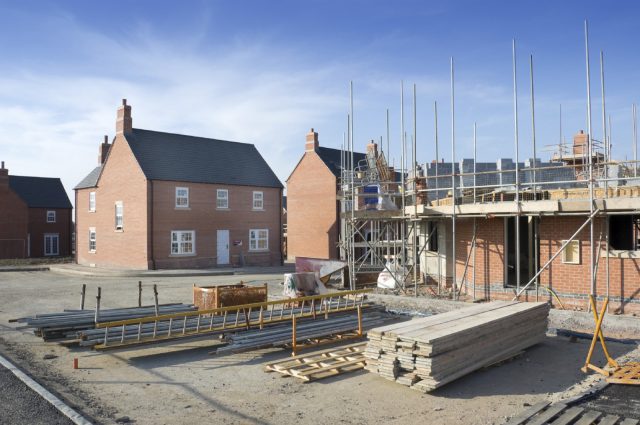Winter-Proofing Your Rental Property
As bad weather looks set to hit, it is important for landlords to visit their rental properties and assess any work that needs to be done to protect the home from the elements.
Maintenance issues in the wintertime can create heavy bills and significant damage. Here is some advice on how to tackle common problems:
Looking outside
It is crucial to visit the house in the daylight, to fully inspect how the property is holding up. Before heading into the home, take a look at the outside, particularly the roof. Ensure that all of the tiles are fit correctly and securely.
Letting agent Belvoir’s Adam Rastall, owner of the Liverpool, West Derby office, says: “You should check the roof for loose tiles that could come down on a windy evening. It is essential that these are firmly secured in order to prevent rainwater leaking into the roof space. Heavy rainfall can damage a property at speed if your property’s roof space is left unprotected.”
Next, identify any issues with the guttering, downpipes, and storm drains. Belvoir Melton Mowbray’s Charlotte Baker, advises: “Make sure your guttering is correctly aligned and securely connected to the downpipe.”
Owner of Belvoir Cheadle, Darragh Lee, adds: “Also check that it is not cracked or leaking. Ensure that the guttering is free flowing and clear of moss and fallen leaves too; a clogged gutter can cause rainwater to overflow and pour down the fabric of the building.
“Storm drains should also be free of clutter, leaves, and debris so that rain water can pass into them with ease. Blocked drains can overflow and cause flooding.
“Also, look at your condensate pipes which come out of the boiler and usually run down the outside of your property. Make sure they are lagged and insulated. As soon as the temperature drops below freezing, these pipes could freeze if not sufficiently insulated and this will automatically cut off a boiler and give an error message.”
If the garden has fence panels or trellising, the condition of these needs to be checked also.
Lee explains: “Heavy wind and rain can cause extensive damage to garden fence panels and trellising, especially if they are already deteriorating.
“Check for wear and tear and firmly secure or replace if required. Be aware, however, that even the securest of fences which are well maintained and in good condition can still be affected by very high winds.”
It is also wise to fit an isolator onto the stopcock for the outside tap, so that the tenant can switch it off if necessary.
Inside Assessments
Upon entering the property, take note of whether the house is warm or cold, and if it smells of damp. If possible, it can be important to meet the tenant at the house so that you can discuss any problems, and advise them on signs to look for in winter.
Baker says: “Talking to tenants when doing an inspection can help identify problems. If, for example, the central heating system is playing up, this gives you the opportunity to have it repaired before it breaks down and incurs emergency call out costs.”
Lee states: “It’s important to time your boiler service each year so it’s done in the months leading up to winter, as all sorts of problems occur with boilers when they have to start to work hard again during the winter months.”
Moving around the home, look for condensation. This can cause major issues during winter, so signs to look for include clouded windows and damp walls.
“You should check for condensation around your windows and on the inside of external walls where it’s more likely to be seen,” says Rastall. “Condensation is a massive problem in winter due to the property being heated up; when the warm air meets cooler air, or a cooler surface, it has to release some of its moisture as a result. Poor ventilation can make the problem worse.”
The extractor fan in the bathroom should be checked to ensure it is working correctly, to prevent built up moisture.
Rastall continues: “Bathroom extractor fans should be fully functioning and not clogged with debris. Allowing steam from the shower or a hot bath to exit out of the bathroom window is also advisable. If the condensation problem in the property is severe ask a local builder or damp professional what they would advise.”1
Always check the walls and ceiling of every room to look for brown stains or peeling paint.
Lee says: “Brown staining on walls or ceilings can be an indication of a leak. Determine what’s causing the leak and repair or fix accordingly. Brown staining on a bedroom ceiling is usually a sign that a roof tile has fallen off or come loose. Paintwork which is peeling or bubbling can also indicate a leak or other damp issues.”
Look inside the loft hatch to check that the pipes are lagged sufficiently, and look for daylight creeping in through the roof tiles.
Baker notes: “Ensure the property is fully insulated. In particular, watch out for pipes being above the insulation in the loft as these can be exposed to cold temperatures even if the heating is on.”1
Lee adds: “While in the loft space, assess the alignment of the roof tiles. If you can see daylight, some of your tiles may need to be repaired or replaced.”
Solutions
It is important to stay proactive; once an issue is identified, organise any maintenance work as quickly as possible.
“Acting and reacting quickly to maintenance issues as winter approaches is essential,” Lee says. “Even small problems are likely to grow as the temperature falls, and, as a maintenance issue escalates, so does the price to fix it!”1
Checklist
- Visit the rental property and inspect any necessary work.
- Clear the gutters – clogged guttering can cause water to flow down the fabric of the building.
- Check the fence panels for looseness.
- Make sure the central heating is working, and have the boiler serviced.
- Secure any loose roof tiles, or replace them if needed.
- Unclog storm drains.
- Explain signs to look for to your tenants.
- Ask tenants to report any maintenance problems.
- Limit condensation by ensuring good ventilation.
- Insulate pipes, including condensate pipes – this will prevent them from freezing.
- Resolve issues as quickly as possible to avoid bigger problems.





